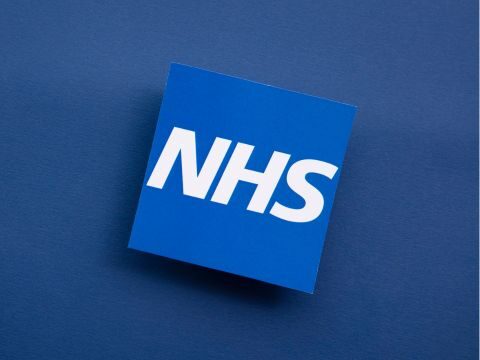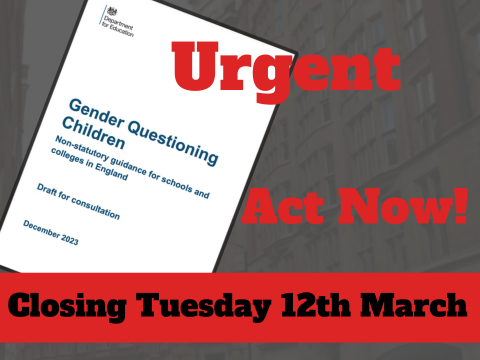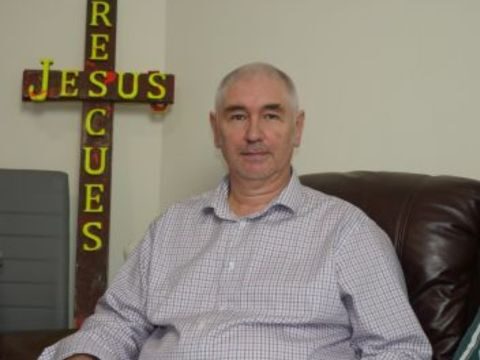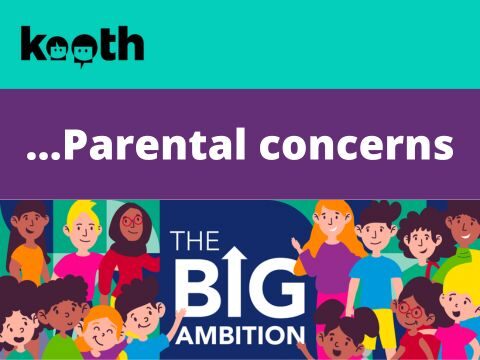



But in schools there appears to be an unthinking approach that any child seeking or engaged in questioning their gender identity must be supported, and any teacher or staff member or even parent who does not use their preferred pronouns is to be condemned and investigated. One teacher in Ireland is in prison at present due to his refusal to do this. An English evangelical teacher was referred to the Teacher Regulation Agency (TRA) for the same matter. All standard safeguarding procedures and proper pastoral caution seem to be thrown away when the issue of gender identity is mooted. The effect of this on classmates and other families has not been examined, and the confusion and “contagion” that can result. Many families encounter this when their primary age child returns home from school and says they learned in school they could be a “girl” or a “boy”. Evidence is now there that the vast majority of those under 16 presenting themselves as in search of a different gender identity from the sex they were born with have underlying autistic, mental health, or special educational needs issues. One significant factor is how many have come from divorced or separated parents – a fact in a child’s life that immediately makes them question their identity, for if the unity of the two people who made them is fractured, what does that make the child, when its progenitors are no longer one? Fissures open up in their being, and they are forced to question who they are. The availability of a supposed answer in terms of changing gender identity can all too easily present itself in unhappy circumstances such as these.
The reason for this conflict and controversy is quite simple: the new RSE Law & Guidance was passed for ideological purposes, not primarily educational purposes. It has created a right to be consulted on school policies for parents, but then removed their right in secondary schools to take their child(ren) out of lessons they do not approve of. Materials being used in school were kept from parents on the specious basis copyright protected them – but that has now clearly been overruled by the Department of Education. The argument was that to prevent homophobic or transphobic bullying, all children MUST be taught about LGBT issues so they would be prepared for “life in modern Britain”, and by the prophylactic of early knowledge grow into tolerant, diverse and inclusive citizens with never a question raised about the various lifestyles and practices of others. But to do so, to use the words of Miriam Cates MP in her blistering speech in the House of Commons committee of June 2022, it was necessary to invite “adult sexual liberation campaigners” into schools, which resulted in these lessons and activities and classes importing into school, in her words, “grooming practices”. In order to achieve this nirvana of tolerance, inclusivity and diversity, children at an age where the issues were either foreign, or incomprehensible, needed to be exposed to all the materials of these campaigns: question their gender; learn about adult sexual practices and learn about all the varieties of families with concepts and relations that were completely outside of their range of knowledge and understanding, and can undermine their own sense of identity. That was the purpose, and that it was deliberate and designed may be illustrated by a clash in the House of Commons Committee rooms of an APPG (All Party Parliamentary Group) prior to the pandemic, when the Minister of State for Schools Nick Gibb was courteously asked how the difficulty of Christian, Muslim or Jewish children being “taught” LGBT content (the guidance says this is a necessary part of what children must learn in secondary school under RSE but no definition of “content” is give) when their religion forbids the practices contained in the umbrella term LGBT. He leaned over the lectern wagging his finger at the question and shouting, “You will teach LGBT! You will teach LGBT”. It was evident the matter was a cause and a campaign, not an educational matter. LGBT content – undefined as yet by any official – HAD to be taught in schools.
Later guidance from the Department of Education and Ofsted/ISI has resiled on this to some extent and made it clear religious schools can teach according to their faith, and that it is the legal rights of “LGBT people” (Ofsted’s phrase) that must be respected. But few schools have heard this later music above the din of the earlier arguments, and a climate of fear reigns if the orthodoxy of LGBT is ever questioned. We have just seen how that operates in the case of Kate Forbes, standing – or not – for the leadership of the SNP. It is fast becoming the case that you cannot stand for public office unless you avow allegiance and support for “inclusive” legislation. In the 17th & 18th centuries there were “Test” Acts to show you conformed to the religion of the establishment. Well, we have a new establishment now, with views to which, it would seem, all must subscribe.
However, two recent CENSUS material reports from the Census of 2021 show, in terms of numbers, that the situation in reality is very different from what might be assumed from the emphasis on LGBT inclusivity and ‘normalisaton’ in RSE.
Firstly, the two protected characteristics of the Equality Act 2010 that are encompassed in the phrase “LGBT”: sexual orientation and gender re-assignment.
From the pervasive influence of Stonewall in schools, you would think those potentially open to suffering from discrimination formed a large part of any class or school. There is no equivalent campaign body for those suffering from autism and its related conditions; no equivalent body in schools for those who are physically or otherwise disabled; no organisation in fact that speaks specifically for girls in school, from a female perspective.
Yet statistically 50% of pupils are female; 1.8% (National Autistic Society) of pupils have autistic conditions; 9% of children are disabled (SCOPE); we can add 13.5% who are BAME (Black & Minority Ethnic).
This covers further protected characteristics of the Equality Act: Sex, Disability, Race.
What are the equivalent figures for “LGBT” upon which RSE puts so much emphasis?
Census 2021 LGBT Statistics
Here are the 2021 statistics from the Census 2021 for “LGBT”:
The census question on sexual orientation was a voluntary question asked of those aged 16 years and over:
In total, 44.9 million people (92.5% of the population aged 16 years and over) answered the question.
Around 43.4 million people (89.4%) identified as straight or heterosexual.
Around 1.5 million people (3.2%) identified with an LGB+ orientation (“Gay or Lesbian”, “Bisexual” or “Other sexual orientation”).
The remaining 3.6 million people (7.5%) did not answer the question.
This means 97% of the population has either declared itself heterosexual or not answered the question.
748,000 (1.5%), described themselves as gay or lesbian
624,000 (1.3%) described themselves as bisexual
165,000 (0.3%) selected “Other sexual orientation”
This amounts to 3.1% who declare themselves “LGBT” with only 1.5% describing themselves as gay or lesbian.
On the issue of gender identity:
45.7 million (94.0%) of people aged 16 years and over answered the voluntary question “Is the gender you identify with the same as your sex registered at birth?”
262,000 people (0.5%) answered “No,” indicating that their gender identity was different from their sex registered at birth. Within this group:
118,000 (0.24%) answered “No” with no written elaboration
48,000 (0.10%) identified as a trans man
48,000 (0.10%) identified as a trans woman
30,000 (0.06%) identified as non-binary
18,000 (0.04%) wrote in a different gender identity
Therefore 96,000 identified specifically as “trans” or 0.2%; 0.5% overall as unclear over gender identity.
Summary of Census 2021 LGBT Statistics
3.1% of the population is LGBT or 3 in every 100
0.5% of the population is trans/gender identity questioning or 1 in every 200
(Census data does not make clear if this 0.5% overlaps with the 3.1% LGBT population as the questions were asked separately)
1% of families is a same sex couple or 1 in every 100
Also over a period of 5 years since same-sex marriages were legally allowed, approximately 2.5% – 3% of “marriages” were same-sex, almost exactly the same as general LGBT figures.
In a primary school therefore of say, 150 pupils, 4 or 5 over the whole school may have issues over sexual orientation, but they are not even at puberty then, of course! 1 pupil might be looking at their gender, but again, is this the case for a child under 11, unless prompted by outside forces or advocates? 10 years ago, the issue scarcely existed. Has human nature changed that much so quickly? One or two families maximum might be a same sex couple. Indeed, with 14 years’ experience of running a school of 175 pupils, age 4 to 18, I can vouch for there being no discernible problem on a scale that would justify the complete reorganization of school life. Again, what the statistics may indicate. But in order to ensure they was no discrimination, proper pastoral care meant any children in question were made safe and secure, even while going through any process of self-questioning. The critical thing was solid rules of anti-bullying, a culture of respect based on the law, and close relations with parents in relation to children who were vulnerable, and unremitting pastoral care for each and every child so they knew they were of worth and esteemed by the school community. There was no need for the relentless indoctrination over causes that are the proper occupation of the adult world.
The actual issues that do present themselves over and over again in schools are the issues of the way boys and girls interact in teenage years; the curse of social media; racial comments and aggravation; and vulnerable children. The “protected characteristics” of sex, race and disability, taken individually and respectively, comprise 50%, 13.5%, 10%+ of the school population. Any child with issues of sexual orientation or gender identity needs to be valued and protected as the human being of inalienable worth that they are; but programmes of unrelenting indoctrination do not assist this process in the real world. When they are in school, such so-called affirmations are actually often divisive, as the recent case of Izoduwa Montague suing Heavers Farm Primary School over the forced inclusion of her child in a Pride Parade in 2018 has shown. Bringing this ideology into the classroom divides and damages. Heavers Farm Primary saw withdrawals of pupils as a result of their ill-thought out policies, and a 5 year long law case.
Further to this, it was an earlier issue of CENSUS 2021 statistics which gives the whole other side of this: the data on religious affiliation & practice.
Census 2021 data on religious affiliation & practice.
When it was issued, the decline in Christian affiliation took the headlines. But look carefully at the numbers:
46.2%, or 27.5 million people described themselves as Christian
0.5% or 271,000 described themselves as Jewish
6.5% or 3.9 million described themselves as Muslim
These are the 3 “Abrahamic” faiths who base their teaching on the Bible (and for Muslims the Qu’ran, much of which is based on the Bible).
It is these faiths who “will teach LGBT” according to the Schools Minister Nick Gibb, directly in contravention to their faith and their own teachings. This is the collision in essence that RSE has caused.
And yet the total of these faiths is 53.2% or 31.7 million people, or 1 in every 2 people.
Let us recall our earlier statistics for comparison:
3.1% of the population is LGBT or 3 in every 100
0.5% of the population is trans/gender identity questioning or 1 in every 200
0.2% of the population specifically identifies as trans or 1 in 500
53.2 % of the population hold religious faith or 1 in every 2
Why on earth then does the Department of Education insist that LGBT issues are so vital and important that they trump all others?
It is not statistically based, it does not respect the majority of parents or the country’s make-up, and does not represent the real pressing issues – of autism, SEN, male/female relations – that actually take up a school’s time. But then it was never intended to. It was and is to achieve a political end, of acceptance without challenge of beliefs and ways of life that have every right to be debated in the adult world, but when focused on children are no more and no less than a form of child indoctrination into acceptance of the wishes and aims of adult men and women. And that is not education. It is child abuse.
Edmund Matyjaszek
23.2.2023
